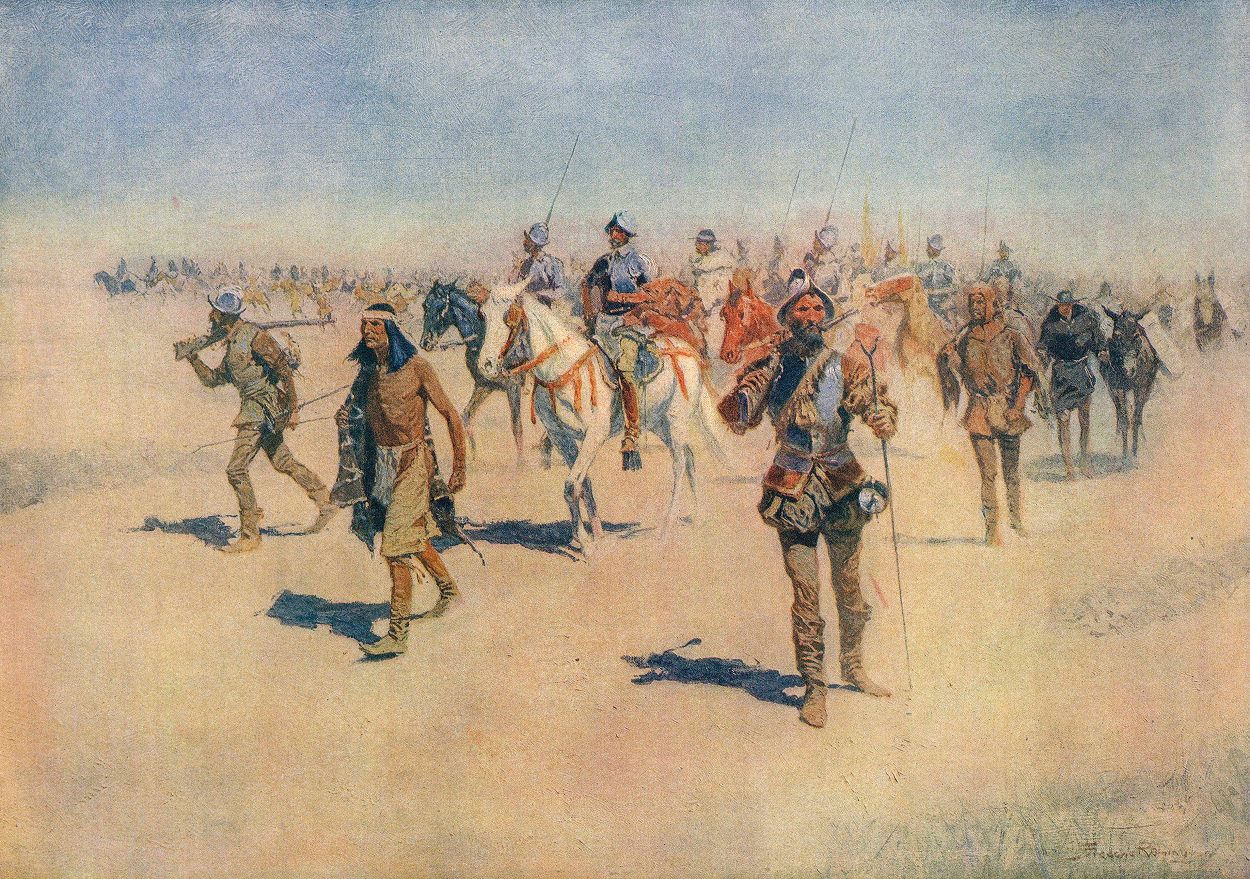The Seven Cities of Gold, also known as the Seven Cities of Cibola, is a legend about a fabled province called Cibola, which held vast cities made entirely from gold.
The legends may have their root in a Portuguese myth that originates from an old Iberian legend, about seven cities founded on a mythical rectangular island called Antillia in the Atlantic Ocean, as depicted in the 1424 portolan chart of Zuane Pizzigano.
However, reports about Cibola mainly originate from shipwrecked survivors of the Narváez expedition, a failed colonial enterprise to establish settlements and garrisons in Florida in 1527.
Of the 600 crew in the expedition, only four survived the endeavour, with the remainder either being lost at sea, killed in attacks by indigenous people, or dying from disease and starvation.
The survivors, Álvar Núñez Cabeza de Vaca, Alonso del Castillo Maldonado, Andrés Dorantes de Carranza and Estéban (or Estevanico), were shipwrecked off Florida in 1528, spending many years wandering through present-day Texas and northern Mexico, before they were rescued by Spanish slavers in Sinaloa in 1536.
Upon returning to Spain, Álvar Núñez Cabeza de Vaca wrote of the expedition in his La relación (“The Story”), published in 1542 as the first written account of the indigenous peoples, wildlife, flora, and fauna of inland North America.
In the La relación, Cabeza de Vaca first mentions gold during an interaction with an indigenous group of people: “We also found pieces of linen and cloth and feather headdresses which seemed to be from New Spain. We also found samples of gold. Through signs we asked the Indians where they had gotten those things. They indicated to us that very far from there was a province called Apalachee, in which there was much gold, and they gestured that it had a great quantity of everything we valued. They said there was much in Apalachee.”
A direct parallel can be drawn with the Apalachee people, a culture centred on the settlement of Anhaica in present-day Tallahassee. The Apalachee emerged from the Fort Walton Culture, one of the principle Mississippian cultures that constructed giant truncated-pyramidal platform mounds and established an expansive trading network.
Archaeological studies of the culture rarely finds evidence of gold working, but the Apalachee acquired copper artefacts, sheets of mica, greenstone, and galena from distant locations through this trade.
Cabeza de Vaca notes that the expedition came into contact with the Apalachee in 1528, reaching an outlying settlement of the wider Apalachee territory. There they occupied the settlement and took the chief and several villagers hostage.
Finding only corn and straw huts, the Spanish searched for evidence of gold or substantial habitation, all the while, harassed by the Apalachee and local tribal groups who conducted a guerrilla war against the invaders.
The expedition left for the coast that same year, constructing five ships to sail along the Gulf. Of the 600 expedition members, only 242 men had survived to this point. Frequent storms, thirst and starvation, reduced the expedition to about 80 survivors, before a hurricane cast Cabeza de Vaca and his remaining men on the western shore of a barrier island that they named the “island of misfortune”.
In response to Cabeza de Vaca’s accounts, the viceroy of New Spain, Antonio de Mendoza, sent an expedition in 1539 under Fray Marcos de Niza and Estéban (a Moorish slave who had been shipwrecked with Cabeza de Vaca) to verify Cabeza de Vaca’s reports.
Fray Marcos de Niza describes in his own book, “the Relación”, many third-party accounts of “Cibola” by travellers he and Estéban encountered, even claiming to have seen the seven cities from a distance in western New Mexico. He states: “I only saw, from the mouth of the pass, seven reasonable towns, somewhat distant, a very cool valley below and very good soil, from which many fumes came out; I was right that there is a lot of gold in it and that the natives treat it in vessels and jewellery.”
Upon reporting his findings, another expedition under Francisco Vázquez de Coronado was despatched to conquer the riches of Cibola. Coronado followed the path described by Fray Marcos de Niza, but upon arriving in 1540 in New Mexico, he discovered that the legendary cities of gold were small indigenous settlements and adobe towns of the pueblos people.
Describing one of the towns, Coronado’s officer and chronicler, Castaneda writes: “It is a little, crowded village, looking as if it had been crumpled all up together. There are haciendas in New Spain which make a better appearance at a distance. It is a village of about two hundred warriors, is three and four stories high, with the houses small and having only a few rooms, and without a courtyard.”
Vázquez de Coronado caused a large loss of life among the Puebloans, both from the battles he fought with them in the Tiguex War and from the demands for food and clothing that he levied on their fragile economies.
Around the same time, an expedition led by Hernando de Soto landed on the west coast of the peninsula of Florida with a large contingent in search of gold he was informed could be found in “Apalachee.” When the de Soto expedition entered the Apalachee territory, the Spanish soldiers were described as “lancing every Indian encountered on both sides of the road.”
Header Image : The Great Explorers by Frederic Sackrider Remington – Copyright : Alamy







